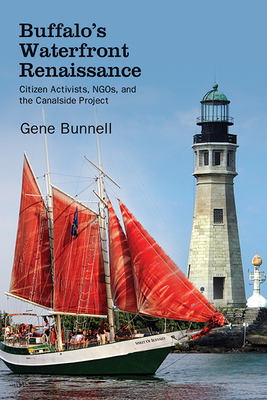
Bunnell, Gene
product information
description
of howBuffalo's post-industrial waterfront was reclaimed for public use and enjoyment and pays tribute to the many local citizens and nongovernmental organizations that made the city's waterfront renaissance possible. After years of litigation, public controversy and debate, preservationists and environmentalists ultimately succeeded in persuading the state to abandon its contentious plans for privately developing Buffalo's waterfront. Gene Bunnell, an experienced urban planner, lays out the Buffalo waterfront's long and troubled history, from the torrent of shipping and commercial activity that was unleashed by the opening of the Erie Canal, to the contamination of the Buffalo River due to waterside industries, to how the Outer Harbor--the last portion of the waterfront to be industrially developed--was reshaped and contaminated by filling in low-lying areas with a toxic mix of waste materials. Drawing on interviews and articles, editorials, and op-eds from The Buffalo News, Bunnell provides the reader with a "real-time" sense of how the struggle over the future of Buffalo's waterfront unfolded and the ultimate victory by local activists to secure environmental cleanup, restored natural habitats, and expanded public waterfront access.
member goods
No member items were found under this heading.
Return Policy
All sales are final
Shipping
No special shipping considerations available.
Shipping fees determined at checkout.







